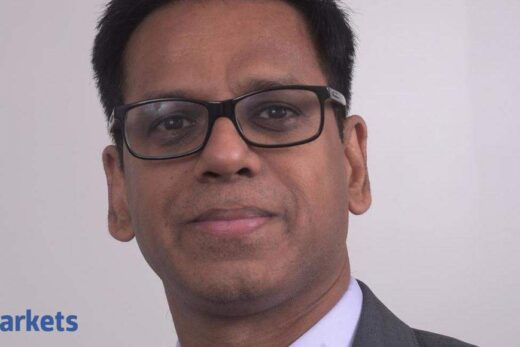An eternal bull like you would always focus on the bright side, great things are happening in IT, great things are happening in some of the cyclical industries like steel and cement. But as we see excitement and participation in the IPO market, it is important to remind ourselves that everything that goes up can also come down.
Undoubtedly. The question is — are we in 2008 beginning kind of a cycle where a lot of IPOs were coming at exorbitant valuations, especially from the infrastructure sector or are we at the 2007 beginning where markets had run up, IPOs were getting lined up and for the next 12 months, markets continued to rise? It is a very difficult call to make but I will hazard a guess that we are somewhere towards beginning to middle of 2007 rather than beginning of 2008 where crashes seemed evitable.
Undoubtedly, as the number of IPOs rise, the amount mobilised is also rising. But so far, a large quality of IPOs have been fantastic. Retail investors have been participating mainly from a flip-flop point of view and institutional investors are buying post listing. This is the time to be selective in IPO investments. There could be some IPOs where listing may not happen as per the grey market premium and that should signal a warning bell but at the end of the day, good quality companies will continue to make money for investors.
IT is one sector where there is an absolute boom. Accenture is looking at hiring 100,000 employees this year. It just tells us that there is demand bullishness. However, one sector which has fallen off the radar is pharma. Both have changed because of Covid but pharma is down the barrel in terms of markets and stock performance and IT is right up there.
The difference between IT and pharma has been the valuation. IT stocks were coming on back of low growth in low valuation and Covid-19 just provided them growth stimulus which resulted in upwards rerating.
The pharma sector on the other end had huge underperformance long before Covid came. But a year before Covid they were getting rerated as other parts of markets were looking expensive. When Covid started, they already had a reasonably high valuation. Covid did provide growth support to them but the valuation barrier ensured that throughout Covid period, they were not further rerated. They just continued to maintain the valuation and which is why we are seeing a difference between performance of the IT sector versus the pharma sector.
In the IT sector, midcap IT has been delivering better returns than large cap IT. In pharma, we have seen selective pharma companies outperforming the broad markets. Now onwards, with the rerating behind us, it will be a company specific story. In the pharma sector, those pharma companies which are able to launch products and are able to provide products at competitive prices, will do well. In the same way, in IT there is a risk of margins getting impacted because of rising wages. We have all seen how startups are advertising about recruitment. So there could be some pressure on IT companies from increased personnel costs.
How does one play the second derivative of IT because whether you work in Accenture or TCS, wage hike is evident. Startups are trying to acquire talent, IT companies are giving big wage hikes. is giving out Mercedes to top performers. There is an IT company which is promising BMWs and Mercedes both. How will the boom in IT translate into consumer spending and which are the sectors to buy or stocks to invest in?
A large part of our consumption is driven by salaried classes and within that salaried class, there is a segment coming from IT and IT related services. As the wage level increases over there, it is more likely to increase at the bottom of wage earners rather than the top. Those people’s propensity to consume will be far higher.
In India roti kapda, makaan ( food, clothes and house) is the way of spending. At least for this segment of people, roti and kapda was not an issue but makaan could be an issue. There will be increased demand for housing especially in work from home environment and people will use the increased salaries to buy a house. For the last couple of months, we have been bullish in the home improvement sector. We think real estate will get supported by primary as well as secondary demand. People will buy new residential houses in the work-from-home environment. People will repair and improve their housing and this is going to create volume expansion for home improvement sectors right from paints, tiles, plywoods, cables, furniture, fixture, electrical appliances, cement and so and so forth.
It is not only about food, clothes and house for the new generation. It is also about cars. B but when it comes to auto segment there is the long awaited big EV disruption. How is it going to pan out? In the near term, it is higher commodity cost and chip shortage that are marring the industry. Do you see this continue to dampen sentiment?
In the auto sector, consumer demand will be less of a concern for the time being. The bigger issues will be raw material securing like chip shortages or the pressure on margin because of rising commodity prices. At least for next two to three quarters, these problems are likely to persist and then each company will have to take a call, balancing between consumer demand versus their margin requirement.
In the telecom sector, it seems like we are on the brink of heading into a duopoly. What is your view?
In the telecom sector, as an analyst we can predict demand, supply, ARPU but how do you price in regulatory risks? The AGR dues, the spectrum fees were something difficult to price in. Now that is the story of the telecom sector in the past where analysts were continuously surprised or shocked by the events which were beyond their comprehension.
Going forward, one simple rule is that if it is a duopoly or two and a half player market, then there will be pricing power and people are addicted to data usage. We are one of the highest data usage countries in the world and our pricing is the cheapest. Data usage is unlikely to come down as people are addicted to it. So, pricing has no room to go down but to go up as duopoly comes into play. So clearly the future of the telecom sector is significantly different from the past. However, we still have to convince ourselves that there will be no regulatory surprise or shock.
Are banks in a position to get rerated if we do not see a third wave and when things start normalising?
I am sure you would have read the news that one of the leading banks got Rs 30,000 crore worth of prepayments. While NPAs are one side of the story, the other side of the story is prepayments from corporates and other borrowers and also the provisioning made by the banks over a period of time.
At this point of time, after underperformance to the broad market, we think it is time to be selectively long on banking businesses. There will be opportunities in the days to come, especially for those banks, where credit culture is fine, where provisioning is taken care of and NPA numbers can be taken at a face value.
We have a market cap of $3 trillion. If the economy gets to $5 trillion, the stock market will also become a $5-trillion market. What will add the next one trillion dollars to India’s market cap?
The addition to market cap will be driven by A) the IPOs which are coming. If LIC gets listed undoubtedly it will add significantly to India’s market cap. So let me divide IPOs into two parts; one will be divestments by the government which will add to the market cap especially of companies like LIC. The second part will consist of new age IPOs which keep on hitting the market.
B)The second thing which will add to the market cap will be growth in the existing businesses, where the big becoming bigger and better is the mantra. Some of the larger companies in respective fields — not necessarily large cap — will continue to gain market share from the unorganised sector. They will continue to grow big and will also get rerated and that addition to market cap will be more than their profitability.
C)The third addition will come again from companies which are coming from new age sectors. These companies are getting listed and the market is in fancy of them. Some of them will be successful and they will add one more sector to the existing market cap. So primarily our market cap will be driven by IPOs, big becoming bigger and new age companies getting listed and creating a new sector.



